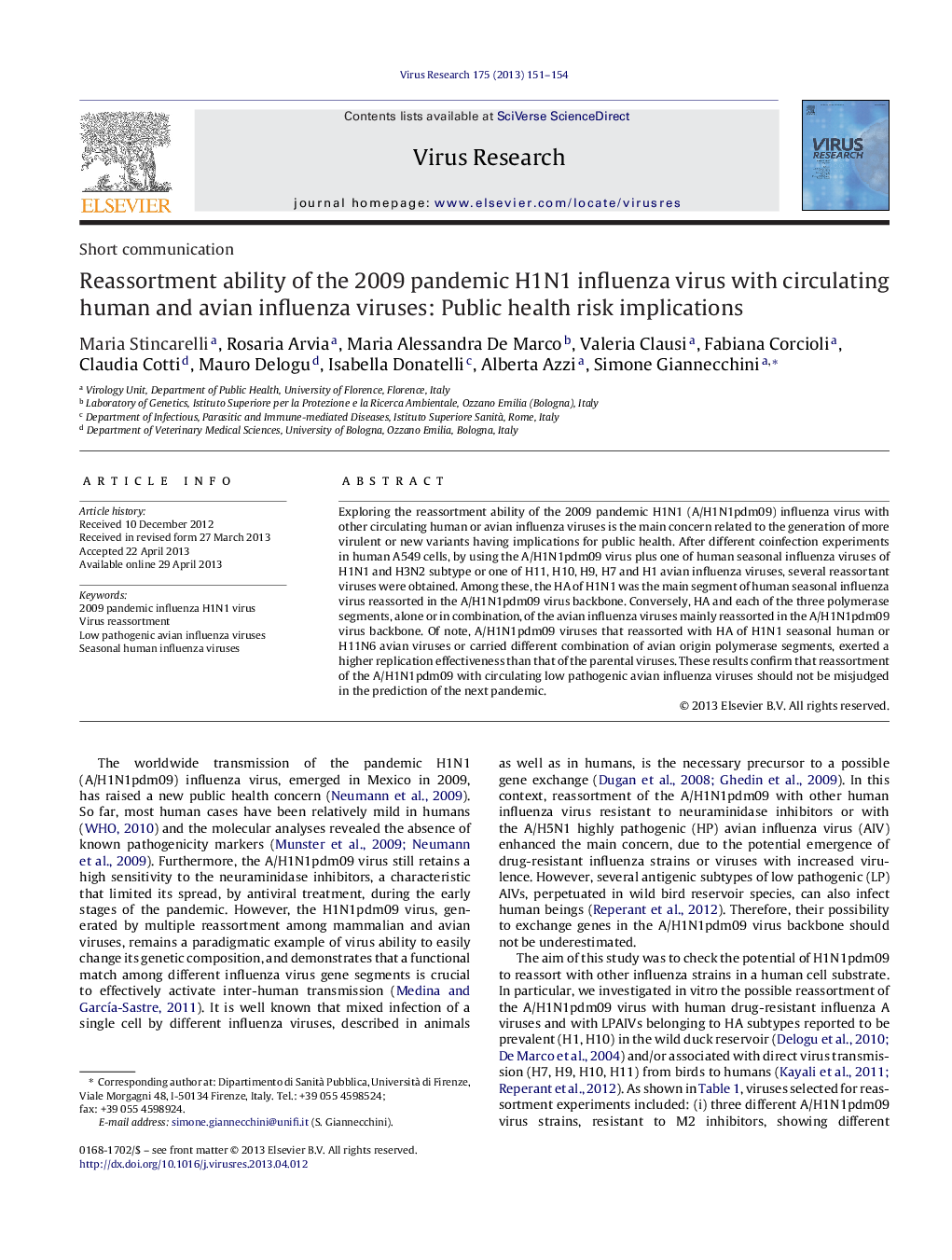| Article ID | Journal | Published Year | Pages | File Type |
|---|---|---|---|---|
| 3428519 | Virus Research | 2013 | 4 Pages |
Exploring the reassortment ability of the 2009 pandemic H1N1 (A/H1N1pdm09) influenza virus with other circulating human or avian influenza viruses is the main concern related to the generation of more virulent or new variants having implications for public health. After different coinfection experiments in human A549 cells, by using the A/H1N1pdm09 virus plus one of human seasonal influenza viruses of H1N1 and H3N2 subtype or one of H11, H10, H9, H7 and H1 avian influenza viruses, several reassortant viruses were obtained. Among these, the HA of H1N1 was the main segment of human seasonal influenza virus reassorted in the A/H1N1pdm09 virus backbone. Conversely, HA and each of the three polymerase segments, alone or in combination, of the avian influenza viruses mainly reassorted in the A/H1N1pdm09 virus backbone. Of note, A/H1N1pdm09 viruses that reassorted with HA of H1N1 seasonal human or H11N6 avian viruses or carried different combination of avian origin polymerase segments, exerted a higher replication effectiveness than that of the parental viruses. These results confirm that reassortment of the A/H1N1pdm09 with circulating low pathogenic avian influenza viruses should not be misjudged in the prediction of the next pandemic.
